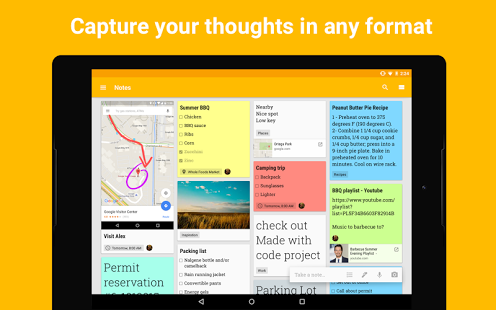GTD for Academics: Collect

Yesterday we revisited GTD for academics and I introduced you to Leo Babauta’s excellent book Zen To Done: The Ultimate Simple Productivity System. His implementation of David Allen’s Getting Things Done philosophy is, I think, ideally suited for college and university professors because of its simplicity, modular structure, and scalability. It also has all the hallmarks of a usable productivity system that I described in this earlier post. ZTD is a kind of “fork” of GTD based on the gradual adoption of ten important habits: Collect, Process, Plan, Do, Simple Trusted System, Organize, Review, Simplify, Routines, and Find Your Passion.
Today, I want to discuss the first one: Collect, which in more traditional GTD setups is called Capture.
How Collect works and why it’s important for academics
When you practice collection, you engage in ubiquitous capture. You are constantly capturing the things that have your attention and immediately getting them out of your head, and into an external form of storage. Acquiring this habit is the starting point if you ever want to become more productive in what you do.
Why is this important? Consider how many times the following has happened to you: You’re commuting to work and suddenly an idea for an article or a research study pops into your head. It seems interesting and promising, and you tell yourself to write it down when you get to the office. Except a thousand different things happen before you get there, and by the time you arrive you may not even remember that you had the thought in the first place. Or it’s not an idea for an article or study, but just something you need to do for yourself or your family, for your classes, or whatever.
Does that sound familiar? Ideas are the stock-in-trade of academics and they are constantly buzzing by us. We can’t will them into existence or expect them to come back to us if we forget. What we can do, is capture them when they happen. Not later, but at the moment they occur. David Allen has said that you should never think a thought more than once, unless you want to.
The habit of collection works by always having something nearby that you can use to capture an idea the moment it comes across your consciousness, to get it out of your head and into something a little less volatile. Don’t take that as an insult. The human brain is a marvelous tool for processing information, but it’s terrible at storage. Cognitive psychology tells us that human short-term memory can only hold seven, plus or minus two, chunks of information at any given time.1 You may think you’re going to remember that amazing insight or idea when you get done with your commute, but in all likelihood you won’t — or you’ll remember it wrong or only partially. Much better to grab it while it’s actually there, and then get it out of your head.
The concept of ubiquitous capture means that you have something on your person at all times that can be used for capturing things that get your attention. This can be anything: a simple paper notebook and a pen, a voice recorder or voice recording app, notes software on a computer or smartphone, a camera, and more. The technology isn’t important. What is important, is that this capturing tool is always available and can be used quickly with a minimum of fuss to capture the idea before it flies away.
What’s also important, of course, is that you actually use the capture tool to collect ideas when then happen: Not later, but right then, and any time it happens. Then, later, when you are at the office, you can empty all those collected snippets into your inbox and process them (Habit 2) into your simple trusted system (Habit 5).
How I Collect
My short term memory is definitely on the “minus” side of “seven plus or minus two” chunks, so I engage in ubiquitous capture as a matter of personal survival. For me, this was a very easy habit to adopt.
I use two main tools for collection: Google Keep, and the “quick add” feature on ToDoist.
Google Keep (http://keep.google.com) is a fantastic, free note-taking service offered by Google. If you have a GMail account, you have Google Keep.

Keep consists of simple notes that look like sticky notes and can contain checklists, typed text, freehand drawings, links, and more. For me, what makes Keep such a valuable collection tool is the ability to add notes to Keep on my Android phone using only voice commands. Using the instructions in this article, if you have an Android phone you can configure it so that when you say “OK Google”, the phone will listen for your voice commands. To add a Google Keep note using Android, all you have to do is:
- Have the phone unlocked and say “OK Google”
- Then say “Note to self”
- Then speak the contents of the note.
Keep will then transcribe your voice to text and include both the transcription and the original voice recording in the note. Then it’s synced across all your devices and you can process it later.
I tend to always have my phone with me, so when I am driving into work or stepping out of the shower2 and I have some big idea, I just pick up the phone and have Google Keep record it for me. Then I process it later (Habit 2).
The other capture tool is the “quick add” feature for ToDoist. I will have a lot more to say about ToDoist in another post, but it’s my “simple trusted system” for handling all my tasks. If I am at my computer3 and something crosses my mind and I need to capture it, I just hit Shift-Command-A on my Mac and a quick entry bar pops up. I can quickly enter the thing I am capturing, along with metadata like contexts and due dates if I want, and save it quickly — and it syncs across all my devices for processing later. It’s all very quick and frictionless:

So for example, if I’m in class (where I always have my Macbook with me) and a student asks me to do something for her, or I spot an error in a course document and need to make a note to change it, or any other of a million things that could flit into my consciousness and then back out again, I just just Shift-Command-A and enter something quick and I no longer have to think about it for now.
That last is key: We capture so that we don’t have to think about so much, and we can better focus on the one most important thing that the moment calls for.
I also have some other, lesser-used means for capture:
- There are a number of browser extensions for capturing stuff on the web. There’s one for Keep, one for Evernote, one for OneNote, and more besides. Use them! When I come across an article I want to read later, I will capture it using one of these clipper apps (either Keep or Evernote, for me; I’m not much of a OneNote person) and process it later.
- We recently bought a Google Home device that lives in our kitchen. I use it the same way I use my phone for hands-free voice capturing, although the Google Home’s capabilities are so far not as extensive as my phone’s. For example I cannot use Home to capture voice memos directly to Keep unless it’s specifically for a shopping list. However, this is pretty handy in the kitchen, where if I’m elbow deep in making a dish and use up the last of the pepper, for instance, I can just say “Hey Google, add pepper to my shopping list” and there it is, before I forget to add it manually. Home just added an integration with ToDoist for adding tasks by voice, too, so its repertoire is expanding.
- I also have the old-fashioned physical inbox — one in my home office and one in my work office — that I use for collecting physical stuff like paper notes, flash drives, business cards, kids’ artwork, etc. If it’s physical and it enters my awareness, it goes in the inbox for later processing.
Conclusions
Collecting is the most important, most foundational habit of GTD/ZTD. Even if you aren’t interested in these philosophies but find yourself overwhelmed by the amount of stuff you have to think about, Collection or Capturing is the first step toward regaining control. And it’s easy — use the technology you have, and that you feel comfortable using. That might be a smartphone or a Moleskine notebook or a stack of Post-It notes or something else. The important thing is that you do it, consistently and continuously until it becomes second nature.
My challenge to you: Set a goal to engage in Collection at all times, and have at least five documented situations where you successfully captured something each day, starting now and continuing for one week.
-
Miller, G. (1956). The magical number seven, plus or minus two: some limits on our capacity for processing information. Psychological Review, 101(2), 343–352. http://doi.org/10.1037/h0043158 ↩
-
Yes, I have my phone in the bathroom with me when I take a shower. Don’t judge me. ↩
-
ToDoist is multiplatform but the quick-add feature is not on the iOS or Android platforms yet. ↩

Leave a Comment